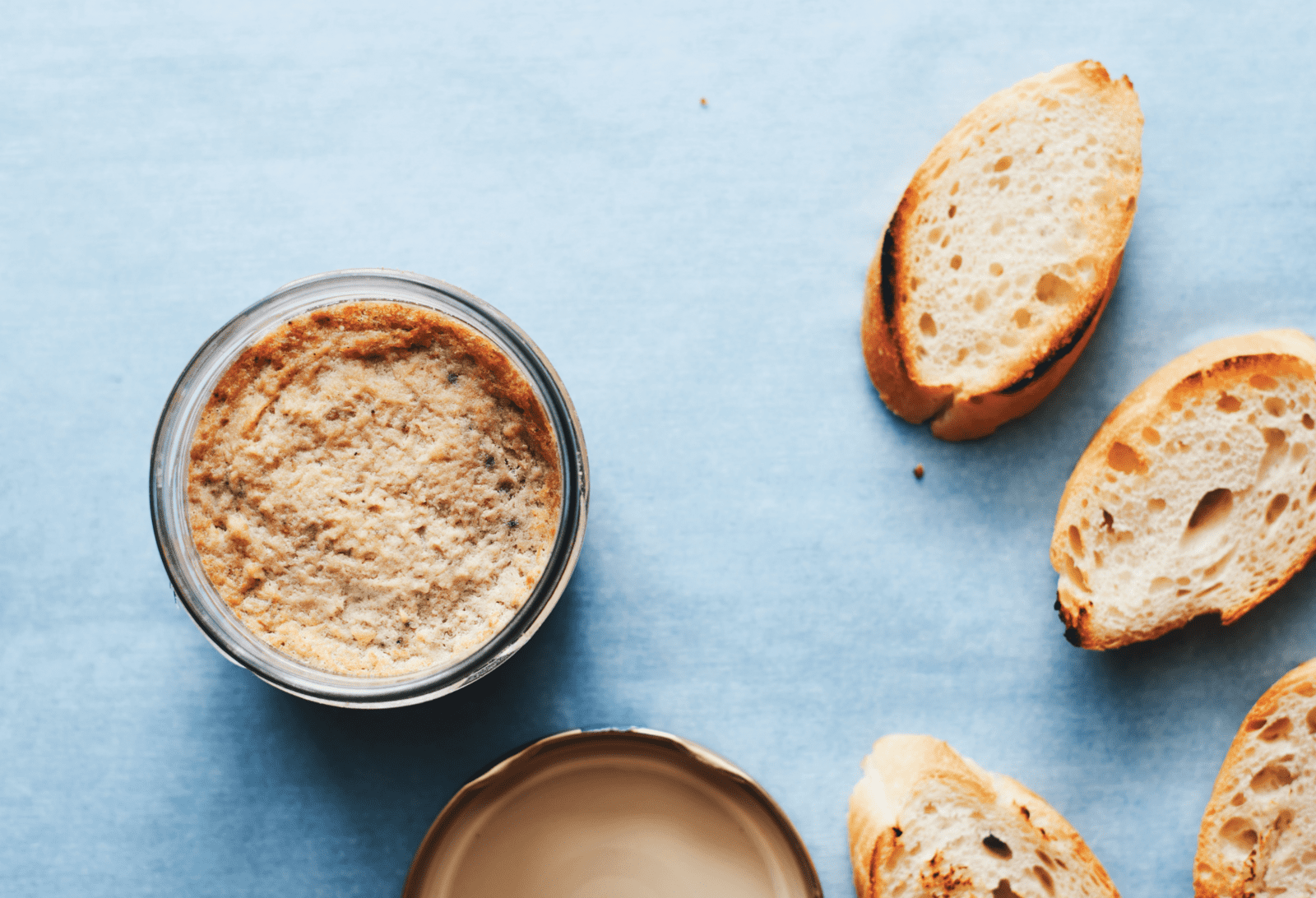
James Beard, ever the proletariat, insisted that pâté was really nothing more than meatloaf—albeit, dressed for a party. I’m sure Beard made a mean meatloaf, but to equate the two is an oversimplification to say the least. In terms of sheer variety, not to mention flavor, the rich, complex, hauntingly delicious European-style pâtés, terrines, and mousses are a world apart from thrifty housewife meals. In fact, with all due respect to the man Julia Child called “the dean of American cuisine,” I’d say meatloaf is to pâté what a Coca-Cola is to Château Margaux.
Like cheese and cured meats, pâté originated as a means of preserving the bounty of the land. At its most basic, pâté is a mixture of finely ground meat to which various seasonings and fat are added. Styles can range from creamy and elegantly smooth mousses to the rustic, coarsely-textured country-style pâtés, typically called pâté de campagne. Traditionally speaking, pâté is made from pork, but today you’ll find varieties made from chicken, duck, and other poultry, as well as seafood, veal, rabbit—there are even those made entirely from vegetables. They’re commonly flavored with spirits like cognac and Armagnac or with port wine, and may also incorporate truffles, dried fruit, and nuts. At its best, pâté not only extends the life of the meat, but elevates it beyond what it could ever achieve on its own.
One of my favorite forms of pâté, rillettes, are made by cooking strips of meat in fat until it becomes soft, pliable, and almost spreadable. The name comes from an Old French dialect term, reille meaning slat or lath (this is also the root of our English words rail and ruler). Because the wisps of meat are bathed in fat as they cook, they become tender despite the initial coarseness of the meat.
Sadly, most people think of pâté only when entertaining, and indeed, more of it is sold at the holidays than any other time of year. Admittedly, it’s one of the quintessential party foods: When I host parties, it’s one of the first things to disappear. But pâté lends itself to so many other applications. I often serve it as the centerpiece of a light lunch or supper, requiring only a green salad, a few cornichons, some crusty bread, and a glass of beer or wine alongside it. I love to spread my pâté on bread atop a layer of rich, full-fat butter. Call it overkill, but trust me, it sends the flavor component over the moon.
Pâté is perfect for the cocktail hour, when you’re looking for a little nosh with drinks before dinner. Here is where my rillettes really shine. A bit of rillette from rabbit or duck on a simple cracker can be the perfect foil for an ice-cold, slightly astringent cocktail that can cut through the fattiness of the pâté. If wine is your drink of choice, bring on the mousse, especially one that includes brandy, port, or truffles.
Like cheese, pâté can certainly stand alone, but uniting the two can lead to a match made in snacking heaven. Opposites usually attract—think salty with sweet, toothsome with creamy—but you’ll find that sometimes more of a good thing isn’t necessarily bad. And don’t forget the condiments! Mustard, pickled vegetables, chutneys, fruit spreads, dried fruits, and nuts are all good options to add texture and round out your pairing. Although pâté will always be welcome at a party, my hope is that people will learn to embrace it as an everyday food. With my curd-forward pairing suggestions, I’m sure even James Beard would come around.
1
FABRIQUE DÉLICES PHEASANT TERRINE WITH FIGS & PISTACHIOS
Inspired by cheeses made by Trappist monks, Hop Along is an organic semi-firm cow’s milk cheese washed with organic cider, resulting in a yeasty, sweet, creamy wheel that satisfies without overwhelming. Tome, it’s a perfect complement to the sweet-and-savory, yet slightly gamey character of the pheasant pâté.
2
ALEXIAN DUCK LIVER MOUSSE WITH COGNAC
+ NICASIO VALLEY CHEESE COMPANY TOMINO
Often when pairing foods, contrast is key. But this mousse is so luscious and rich that I like to stick with that theme by pairing it with something equally creamy. Tomino is a soft-ripened cow’s milk cheese made in 3-inch rounds. Its slightly pungent aroma gives way to a delicate, pleasant flavor that doesn’t interfere with the mousse.
3
LES TROIS PETITS COCHONS RILLETTES DE CANARD
This duck rillette has a lot of fat and really coats the tongue. For that reason, I like to marry it with a goat cheese that’s a bit chalky and a little tangy. Humboldt Fog, with its distinctive layer of vegetable ash running through the middle, is creamy enough around the edges but has a cake-like center. With a hint of barnyard from the goat’s milk, this cheese cuts through the richness of the rillettes.



